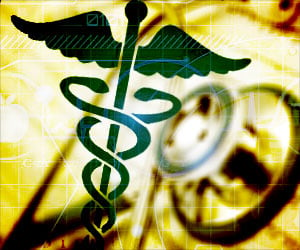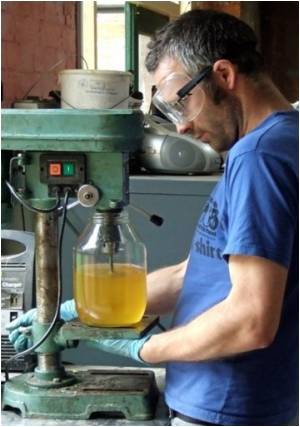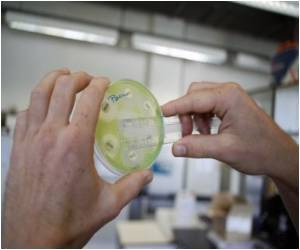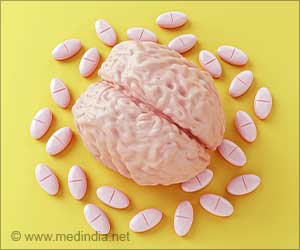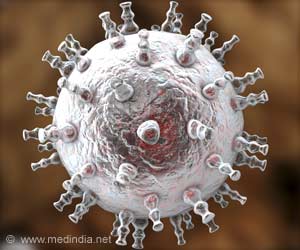The Annual Thematic issue of Experimental Biology and Medicine that appears in September 2014 is devoted to The biology and medicine of microphysiological systems .

The Defense Advanced Research Projects Agency (DARPA) and the Food and Drug Administration (FDA) are collaborating with the NIH in the program. Fourteen of the research teams supported by the program have contributed papers and represent more than 20 institutions, including Baylor College of Medicine, Columbia University, Cornell University, Duke University, Johns Hopkins University, Massachusetts General Hospital and Harvard Medical School, the Massachusetts Institute of Technology, Northwestern University, Nortis, Inc., the University of California, Irvine, the University of Central Florida, the University of Pennsylvania, the University of Pittsburgh, the University of Texas Medical Branch, and Vanderbilt University.
Dr. John P. Wikswo, founding Director of the Vanderbilt Institute for Integrative Biosystems Research and Education and Editor of the Thematic Issue, explains in his introductory review that microphysiological systems (MPS) – often called "organs-on-chips" – are interacting sets of constructs of human cells. Each construct is designed to recapitulate the structure and function of a human organ or organ region, and when connected in an MPS, they may provide in vitro models with great physiological accuracy for studying cell-cell, drug-cell, drug-drug, and organ-drug interactions.
The papers in the Thematic Issue describe the ongoing development of MPS as in vitro models for bone and cartilage, brain, gastrointestinal tract, lung, liver, microvasculature, reproductive tract, skeletal muscle, and skin, as well as the interconnection of organs-on-chips to support physiologically based pharmacokinetics and drug discovery and screening, and the microscale technologies that regulate stem cell differentiation. Wikswo notes that the initial motivation for creating MPS was to increase the efficiency and human relevance of pharmaceutical development and testing. Obvious applications of the technology include studies of the effect of environmental toxins on humans, identification, characterization, and neutralization of chemical and biological weapons, controlled studies of the microbiome and infectious disease that cannot be conducted in humans, controlled differentiation of induced pluripotent stem cells into specific adult cellular phenotypes, and studies of the dynamics of metabolism and signaling within and between human organs.
In his commentary for the Thematic Issue, Dr. William Slikker Jr., Director of the FDA's National Center for Toxicological Research, writes "The goal [is] to accomplish this human-on-a-chip capability in a decade – a feat somewhat equivalent to the moon shot of the 1960s – and, like landing man on the moon, simulating a human being from a physiological/toxicological perspective may indeed be possible. But even if ultimately it is not, a great deal of fundamental biology and physiology will be elucidated along the way, much to the benefit of our understanding of human health and disease processes." Dr. D. Lansing Taylor, Director of the University of Pittsburgh Drug Discovery Institute, says "The Thematic Issue brings together the leaders of the field of Human-on-a-Chip to discuss the early successes, great potential and continuing challenges of this emerging field."
For complete success, we must integrate advances in multiple technical areas, including microfluidics, stem cell biology, 3D microstructures/matrices, multi-cell engineering, universal blood substitutes, and a variety of biological detection technologies, database tools, and computational modeling for both single and a combination of organ systems. Success will be transformative for basic biology, physiology, pharmacology, toxicology and medicine, as well as the new field of quantitative systems pharmacology, where iterative experimentation and computational modeling of disease models and pharmacodynamics and pharmacokinetics are central. The focus is to create physiologically relevant, robust, reproducible and cost-effective tools for the scientific community. Dr. Danilo A. Tagle, NIH NCATS Associate Director for Special Initiatives, adds "This special issue highlights the exciting and rapid progress towards development of MPS for drug safety and efficacy testing. Much progress has been achieved in the two years of the program, and these articles describe the efforts by an outstanding group of investigators towards realizing the goal of fully integrated 10 organ systems."
Advertisement
Source-Eurekalert

